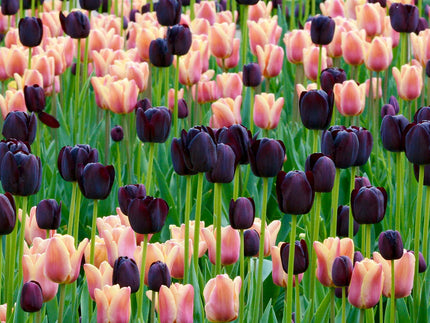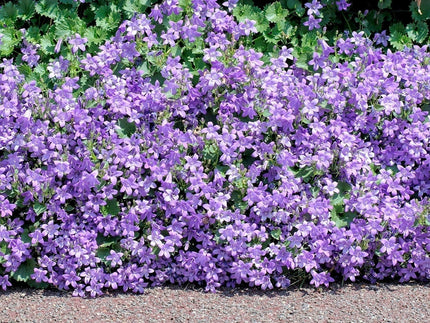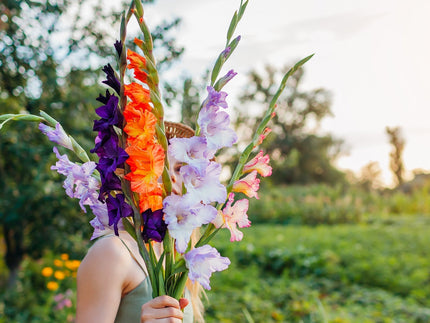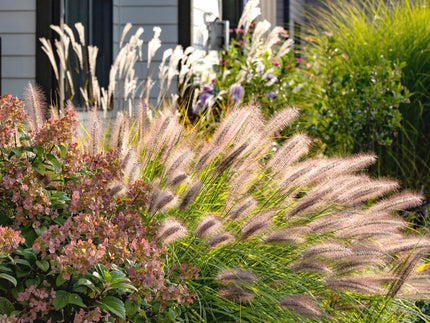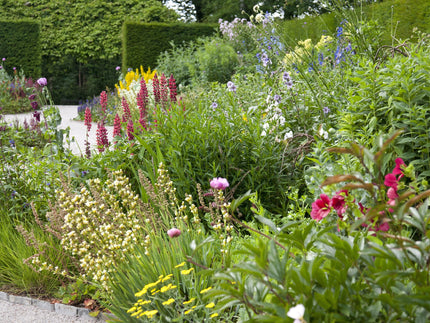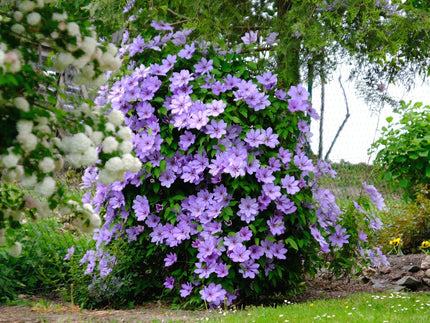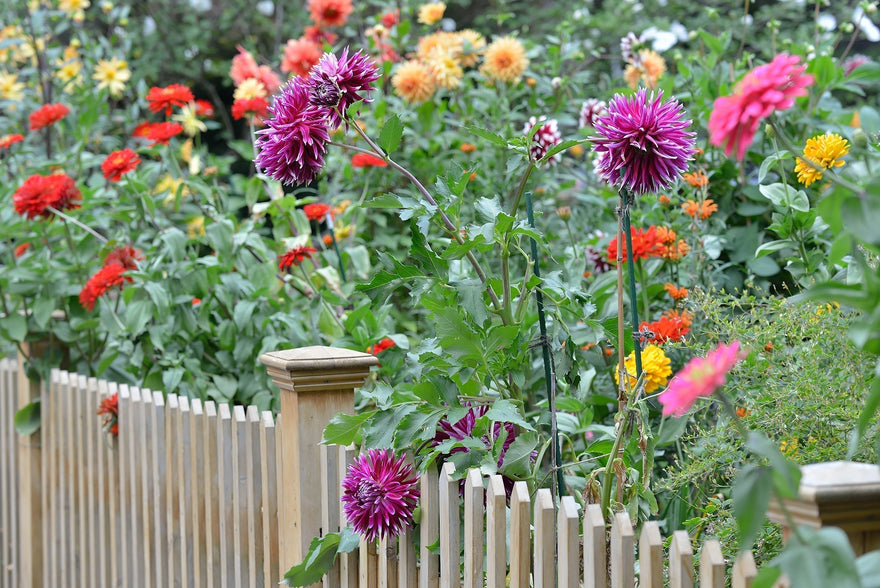
Top 30 most asked Dahlia questions—answered
Dahlias are among the most rewarding flowers to grow, offering spectacular blooms in an incredible variety of colours, shapes and sizes. Originally from Mexico, dahlias have captivated gardeners for centuries and continue to be one of the most popular garden plants today. Whether you are an experienced gardener or just starting out, this comprehensive guide will answer the 30 most commonly asked questions about dahlias and provide expert advice on how to grow and maintain them successfully.
1. What are dahlias?
Dahlias are tuberous perennials that belong to the Asteraceae family, which also includes sunflowers and daisies. They are renowned for their diversity, with thousands of different cultivars available, ranging from tiny pompon dahlias to giant dinner-plate varieties. Their versatility and long flowering period make them a favourite choice for summer and autumn gardens.
2. Are dahlias perennials or annuals?
Dahlias are technically perennials, meaning they can live for many years. However, in the UK, they are often treated as annuals because they do not survive frost. In milder climates, dahlias can be left in the ground with a layer of mulch for protection, but in colder areas, the tubers need to be lifted and stored over winter.

3. When do dahlias bloom?
Dahlias bloom from mid to late summer and continue flowering until the first frosts of autumn. The exact timing of their blooms depends on the variety and growing conditions. To enjoy a longer flowering season, regular deadheading and good care are essential.
4. How much sunlight do dahlias require?
Dahlias thrive in full sun and require at least six hours of direct sunlight each day. If they receive too much shade, they may produce fewer flowers and have weaker stems. Choose a warm, sheltered spot in your garden to help them flourish.
5. What type of soil is best for dahlias?
Dahlias prefer rich, well-drained soil with a slightly acidic to neutral pH (around 6.5–7.0). Adding compost or well-rotted manure improves soil structure and provides essential nutrients for healthy growth.

6. How do I plant dahlia tubers?
Plant dahlia tubers in spring, once the risk of frost has passed. Dig a hole about 10–15cm deep and place the tuber with the eye (growth point) facing upwards. Cover with soil and water well. Space taller varieties 60cm apart and smaller varieties 30–40cm apart to allow for good air circulation.
7. Do dahlias need staking?
Many dahlia varieties, particularly taller dahlias with large flowers, need staking to support their heavy blooms. Insert stakes at planting time and tie the stems loosely with garden twine as they grow. This will help prevent them from snapping in strong winds.
8. How often should I water dahlias?
Dahlias need regular watering, especially during dry periods. Water deeply two to three times a week rather than giving them light, frequent watering. This encourages strong root development. Be careful not to overwater, as tubers can rot in soggy soil.

9. What fertiliser should I use for dahlias?
Dahlias benefit from a low-nitrogen fertiliser, such as a 10-30-20 mix, applied every two to three weeks. High-nitrogen fertilisers promote excessive leaf growth at the expense of flowers. Tomato fertiliser is a good alternative.
10. How do I deadhead dahlias?
Regular deadheading encourages continuous flowering. To deadhead, cut off spent dahlia flowers just above a leaf joint. This redirects energy into producing new blooms rather than seeds.
11. Can dahlias be grown in pots?
Yes, dahlias can be grown in pots, provided they have enough space for root development. Choose a large container with drainage holes and use a high-quality potting mix. Compact and dwarf dahlias varieties are best suited to container gardening.

12. How do I store dahlia tubers over winter?
Once frost has blackened the foliage, cut back the stems to about 15cm. Carefully dig up the tubers, remove excess soil, and allow them to dry for a few days. Store them in a cool, dry place, packed in dry compost or sand, until spring.
13. What pests commonly affect dahlias?
Dahlias can be affected by pests such as slugs, snails, aphids, earwigs and spider mites. Slug pellets, beer traps and natural predators like ladybirds can help keep these pests under control. Regular inspections and prompt action will minimise damage.
14. Do dahlias do better in pots or ground?
Dahlias can thrive both in pots and in the ground, but each method has its pros and cons. Growing dahlias in the ground allows them to develop larger root systems, resulting in bigger plants and more blooms. However, potted dahlias offer greater flexibility, allowing you to move them to sunnier spots or protect them from harsh weather. Container-grown dahlias require more frequent watering and feeding, as nutrients are used up more quickly. Ultimately, the choice depends on your garden space and how much care you can provide.

15. Can I grow dahlias from seeds?
Yes, you can grow dahlias from seeds, though it takes longer than growing from tubers. Start seeds indoors about 6–8 weeks before the last frost. Sow in a seed-starting mix and keep in a warm, sunny spot. Once the seedlings are large enough and all danger of frost has passed, harden them off and transplant them outside. Although this method offers a wider variety of blooms, it takes longer for the plants to flower.
16. How do I propagate dahlias?
Dahlias are commonly propagated by dividing the tubers in spring. Dig up the tubers, and carefully separate them into sections, ensuring each piece has an "eye" (growth point). You can also propagate dahlias through stem cuttings. Take a cutting from a healthy plant, remove the lower leaves, and place it in a well-drained compost mix to root.
17. Why are my dahlias not flowering?
If your dahlias aren't flowering, it may be due to too much shade, excessive nitrogen fertiliser, or poor soil conditions. Dahlias need at least six hours of sunlight each day. Use a low-nitrogen fertiliser and ensure proper soil drainage for the best flowering.
18. Can I leave dahlias in the ground over winter?
In milder climates, you can leave dahlias in the ground with a thick layer of mulch to protect them from frost. However, in colder areas, it’s best to lift the tubers after the first frost, dry them, and store them in a cool, dry place over winter to prevent rotting.

19. How do I get bigger blooms on my dahlias?
To encourage larger blooms, practice disbudding by removing smaller buds. Regular feeding with a balanced fertiliser (low in nitrogen) and ensuring consistent watering will also help the plant direct more energy into producing large flowers rather than excess foliage.
20. Can I grow dahlias indoors?
Dahlias can be grown indoors, but they typically need plenty of light and space. They do best in a bright, sunny room or under grow lights. Ensure the room temperature is between 18–21°C, and provide good airflow to prevent disease.
21. Are dahlias toxic to pets?
Yes, dahlias are mildly toxic to pets, particularly if ingested. The tubers and other parts of the plant can cause gastrointestinal upset in cats and dogs. Keep dahlias out of reach of curious pets.

22. Do dahlias attract pollinators?
Yes, dahlias are excellent at attracting pollinators like bees and butterflies. The single-flowered dahlia varieties are particularly popular with bees due to their open structure, making it easy for pollinators to access the nectar.
23. How long do dahlias live?
With proper care, dahlia tubers can live for several years, producing blooms each season. However, their lifespan is dependent on climate conditions and whether the tubers are lifted and stored properly over winter.
24. Why are my dahlia leaves turning yellow?
Yellowing leaves can be caused by overwatering, a lack of nutrients, or pest infestations. Ensure the soil is well-draining, apply a balanced fertiliser, and check for common pests like aphids or spider mites, which can also cause yellowing leaves.
25. How do I prevent dahlia tubers from rotting?
To prevent tuber rot, ensure your dahlias are planted in well-draining soil. Avoid overwatering and ensure that the tubers are not sitting in soggy conditions, particularly during winter storage. If storing dahlia tubers, dry them thoroughly before packing them in a cool, dry location.

26. What are the best companion plants for dahlias?
Good companion plants for dahlias include geraniums, which help repel pests, and other flowering plants like cosmos, salvias, and verbena. These plants complement dahlias by adding colour and can help protect them from common pests like aphids.
27. Can I grow dahlias from cut flowers?
Unfortunately, dahlias cannot be grown from cut flowers. The flowers don’t root, so the best way to propagate them is through division or cuttings, as explained earlier.
28. What is the best time of day to water dahlias?
The best time to water dahlias is early in the morning or late in the evening when the sun is not as intense. This helps reduce water loss through evaporation and prevents the risk of fungal diseases from moisture sitting on the leaves during the day.
29. How do I prepare dahlias for winter storage?
After the first frost, cut the stems back to about 15cm. Carefully lift the tubers, remove any excess soil, and let them dry in a cool, dry spot for a few days. Store the tubers in a cool, frost-free place, such as a shed or garage, in sand or dry compost to keep them safe until spring.
30. Can I grow dahlias in clay soil?
Dahlias can be grown in clay soil, but it requires improving drainage. You can do this by adding compost or sand to break up the soil and enhance aeration. Well-drained soil is essential for preventing root rot and ensuring healthy tuber development.

Final thoughts
Dahlias are among the most rewarding flowers to grow, providing a dazzling display from summer through autumn. With the right care, you can enjoy their beauty year after year.






















































































































































































































